Valuing inclusion Theory of Change
This Theory of Change is in its final stages of development and supports Informal STEM Engagement practitioners to articulate impact through a shared language, that can both prove and improve meaningful and inclusive science communication practice.
The Association for Science and Discovery Centres (ASDC) is working towards an evidence-informed approach to EDIA (equity, diversity, inclusion, accessibility) practice.
We have created a Theory of Change that defines seven change mechanisms, shared as 'inclusive outcomes' for young people engaging with the Informal Science Learning sector.
The development of this work, over the past three years, has been working in collaboration with eminent consultants and science engagement partners, including the British Science Association, Professor Emily Dawson, Professor Louise Archer, Dr Jen DeWitt, Dr Sophie Bartlett, the Institute of Physics, Science Ceilidh and the Science and Technology Facilities Council (STFC, part of UKRI).
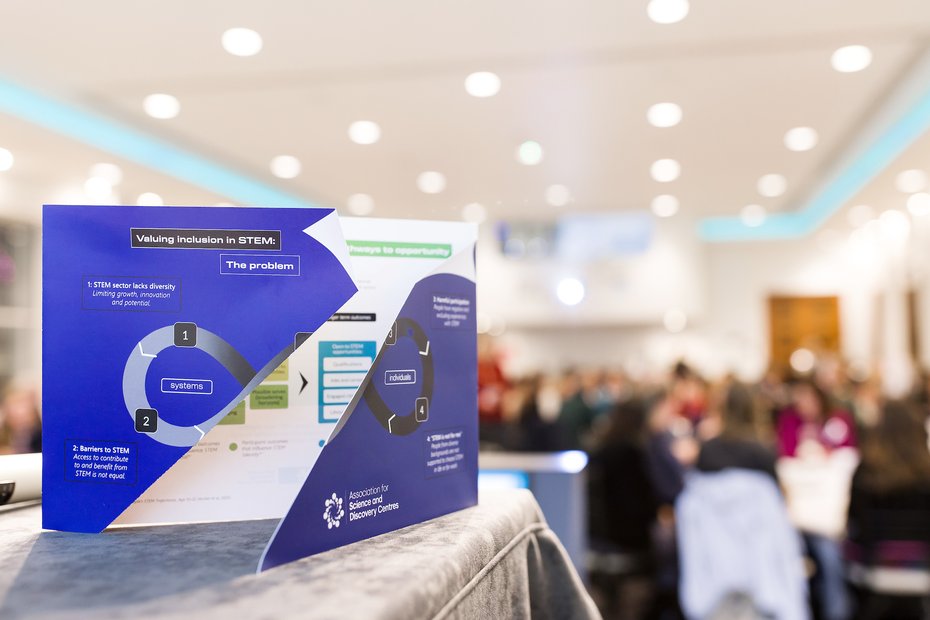

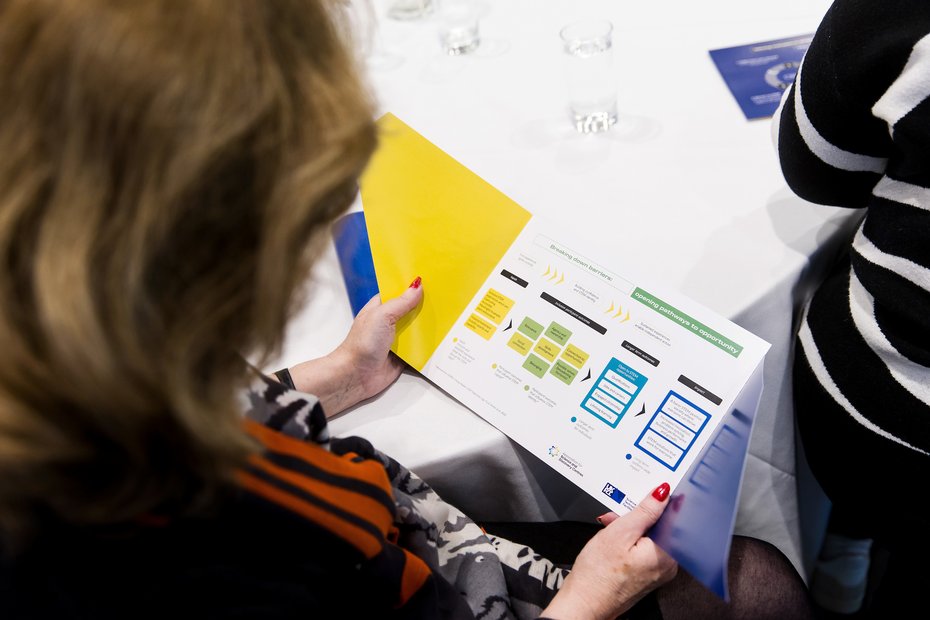
We propose that these inclusive outcomes should be the focus of the design and development of our work in order to build confidence from initial experiences that can ignite curiosity, towards enabling independent actions for participants such as the uptake of STEM opportunities.
Part of the long running Explore Your Universe national STEM engagement programme, this Theory of Change values equity and inclusion in STEM engagement for its positive impact for individuals and society, and as the key to unlocking more diverse participation in STEM research, development, industry and innovation for the future of the UK.
“Diversity is not an optional add-on; it is an economic imperative.”
Dame Chi Onwurah MP, Chair of the Science, Innovation and Technology Committee (speaking at the ASDC National Conference 2024, The Royal Society, London)
Valuing inclusion in STEM: The problem
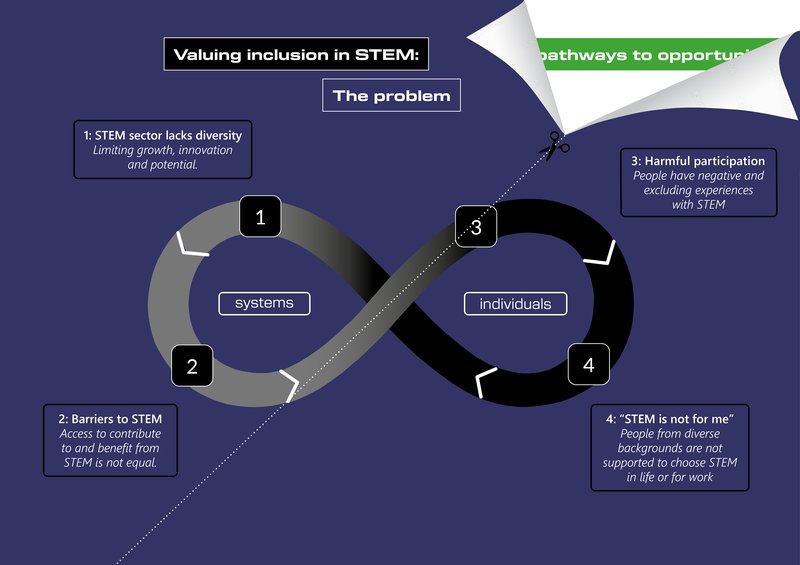
Valuing inclusion in STEM: The solution
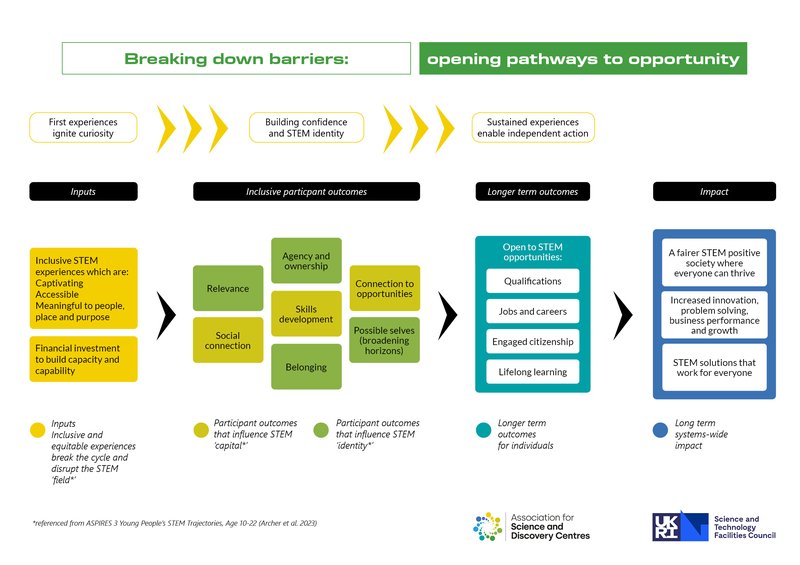
Explore the evidence behind our graphics above including the problem statements and the seven inclusive outcomes: Relevance, Agency & Ownership, Skills development, Belonging, Social connection, Connection to opportunities and Possible selves.
These outcome areas were surfaced through a literature review across three years of community engagement programmes across the Informal Science Engagement sector, followed up by scoping and consultation with funders, evaluators and researchers, engagement professionals, youth and community partners. These areas have since been investigated and validated within the Explore Your Universe: Valuing Inclusion project, and are the crucial "change mechanisms" within our Theory of Change.
Valuing inclusion overview of change diagram
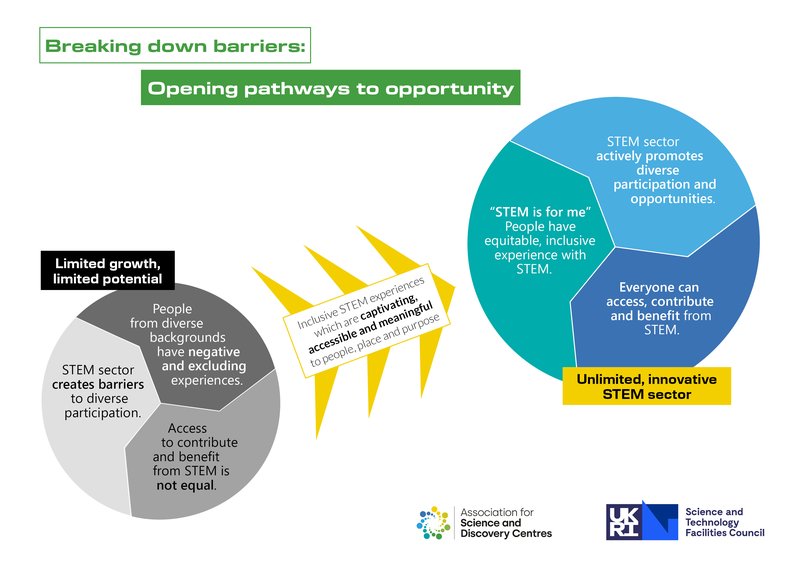
The Theory of Change is disseminated in the following ways as deemed more appropriate for the two key target audiences for this stream of project work:
- Informal Science Learning and Engagement organisations and practitioners. This audience is most invested in the development of the Logic model itself as a tool to support them to design, measure, prove and improve their inclusive practice through a share language of impact.
- Funders and strategic level stakeholders. To consider the extensive evidence behind the problems of exclusive and harmful participation, and the focus of funding and programming that considers more meaningful and inclusive outcomes within evaluation requirements.
“Knowing who science centre visitors are will always be important, but it’s not enough … We have to be able to understand more about people’s visits and the impact of their visits if we want to develop meaningfully inclusive experiences for everyone.”
~Professor Emily Dawson
